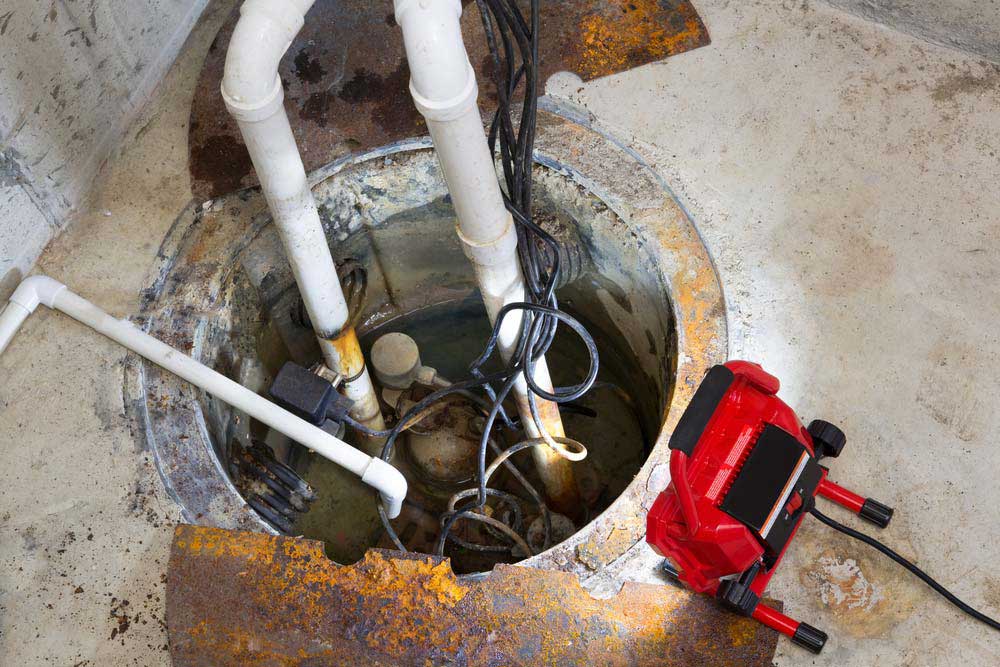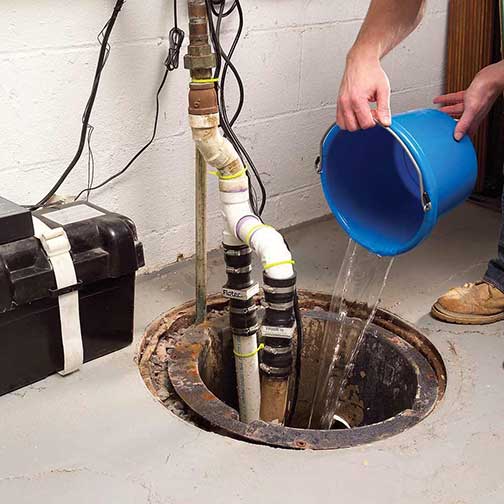Are you looking for help and advice on How to Care for Your Sump Pump?

Sump pumps are important parts in lots of homes, specifically in areas susceptible to flooding or extreme dampness. They assist prevent water damages by efficiently getting rid of excess water from basements or crawl spaces. However, like any other home appliance, sump pumps call for regular maintenance to guarantee they operate successfully when needed the most. Cleansing your sump pump is a vital part of its maintenance, and recognizing how to do it appropriately can conserve you from pricey fixings and potential calamities.
Introduction
Maintaining a tidy sump pump is vital for its proper functioning and durability. Disregarding this essential job can lead to obstructions, malfunctions, and inevitably, water damage to your building. As a result, finding out just how to clean a sump pump is important for house owners that depend on these gadgets to keep their cellars completely dry and secured.
Comprehending the Sump Pump
Before diving right into the cleansing procedure, it's important to have a basic understanding of just how a sump pump works. Normally installed in a pit or basin listed below the cellar flooring, a sump pump includes numerous key components, consisting of a pump, a float button, and a discharge pipeline. When water collects in the pit, the float switch turns on the pump, which then pumps the water out through the discharge pipe, far from the building's foundation.
Indications of a Dirty Sump Pump
Understanding when your sump pump needs cleaning is crucial for avoiding prospective breakdowns. Some typical indications that show a dirty sump pump consist of unusual noises throughout procedure, reduced water circulation, and noticeable debris in the pit. If you discover any of these symptoms, it's necessary to cleanse your sump pump immediately to avoid any type of additional issues.
Preparing for Cleansing
Before you start cleaning your sump pump, it's important to take some safety and security precautions. Begin by shutting off the power to the pump to avoid any kind of electrical crashes. Additionally, use appropriate protective equipment, such as gloves and safety glasses, to protect on your own from dirt, debris, and possible microorganisms.
Detailed Overview to Cleaning a Sump Pump
Shutting Off the Power
Begin by detaching the power supply to the sump pump to avoid any mishaps while cleansing.
Getting Rid Of Debris and Dirt
Use a container or a scoop to get rid of any type of visible debris, dust, or sediment from the sump pit. Dispose of the debris properly to avoid it from obstructing the pump or the discharge pipeline.
Cleaning up the Pump and Float Switch
When the pit is free from particles, meticulously remove the pump from the pit. Evaluate the pump and the float switch for any type of signs of damage or wear. Utilize a soft brush or towel to clean up the surface areas and get rid of any collected gunk.
Flushing the System
After cleaning up the pump and float button, purge the sump pit with clean water to eliminate any type of staying dirt or sediment. This will assist ensure that the pump runs efficiently and effectively.
Checking for Proper Performance
Prior to reinstalling the pump, perform a fast examination to make sure that the float switch activates the pump properly. Put some water right into the sump pit and observe the pump's procedure. If whatever is operating correctly, you can rebuild the pump and reconnect the power supply.
Maintenance Tips to Maintain Your Sump Pump Clean
In addition to periodic cleaning, there are numerous upkeep tips you can comply with to maintain your sump pump in optimal problem:
- Normal Evaluation: Inspect your sump pump regularly for any type of indications of wear, damages, or blockages.
- Keeping the Surrounding Area Clean: Guarantee that the location around the sump pit is free of particles, dust, and obstructions.
- Checking the Pump Periodically: Evaluate your sump pump periodically by putting water into the pit and observing its operation. This will certainly assist you recognize any kind of possible issues before they rise.
Conclusion
Cleaning your sump pump is a vital aspect of its maintenance and ensures that it operates efficiently when you need it one of the most. By complying with the steps outlined in this guide and including normal maintenance right into your routine, you can extend the lifespan of your sump pump and secure your home from water damages.
6 STEPS ON HOW TO CLEAN A SUMP PUMP PROPERLY
UNDERSTANDING SUMP PUMPS
Your sump pump plays a crucial role in protecting your home by managing and removing excess water. It primarily functions as a “shield”, guarding your basement against the damaging effects of water accumulation. The pump is housed in a sump pit in the lowest part of your basement, and its job is to pump out any water that collects there.
During heavy rainfalls or when snow melts rapidly, water can infiltrate your basement, posing potential risks like flooding, structural damage, and harmful mold growth. Here, the sump pump springs into action, pumping out the intruding water and directing it away from your home.
SAFETY FIRST
Before cleaning, remember to prioritize safety. Disconnect the sump pump from the power source to prevent any accidental electric shocks. Also, wear sturdy gloves to protect your hands from any sharp or dirty components within the pump.
REMOVE THE SUMP PUMP
After ensuring your safety, the next step is to remove the sump pump from its pit. Doing this might require careful maneuvering as you don’t want to damage any pump components. Once removed, clean the sump pit to remove any accumulated debris or sludge.
INSPECT THE PUMP
Inspect the pump for any visible signs of wear or damage. Check the power cord, float switch, and impeller housing. If any components look worn out or damaged, consider replacing them to ensure optimal performance.
CLEAN THE PUMP
Thoroughly clean the pump with warm, soapy water. Make sure to rid it of any dirt, gravel, or other debris that might impede its performance. You can use a toothbrush to clean the small, hard-to-reach parts of the pump.
REINSTALL THE SUMP PUMP
- Reinstall the pump into the sump pit
- Make sure it’s positioned correctly to remove the water effectively
- Once it’s back in place, reconnect it to the power source
TEST THE PUMP
Finally, pour some water into the pit to ensure the pump works correctly. It should start automatically and begin pumping out the water; if it doesn’t, check the power source and the positioning of the pump.
Remember, while cleaning your sump pump is an essential part of home maintenance, hiring a professional plumber for a thorough inspection and cleaning at least once a year is also important. This will ensure that your pump is in optimal condition, ready to protect your home from potential water damage.
BEST PRACTICES FOR CLEANING SUMP PUMP DISCHARGE PIPES
- Regular Inspection: Regularly inspect your discharge pipes, especially during heavy rainfall or snowmelt periods. Look for any signs of blockage or damage. Early detection of problems can prevent serious issues down the line.
- Periodic Cleaning: Over time, sediment and debris can accumulate in the discharge pipes, impeding the flow of water. Regular cleaning helps keep the pipes clear and functioning efficiently. You can use a high-pressure water jet to effectively clean the pipes.
- Insulation During Winter: In colder climates, discharge pipes can freeze, blocking the outflow of water. Protect your discharge pipes from freezing temperatures by insulating them with foam pipe insulation. This will ensure the sump pump can continue to discharge water even in freezing conditions.
- Proper Positioning: The discharge pipe should be positioned to direct water away from your home’s foundation. Improper positioning can lead to water seeping back into the basement. Ensure the pipe is long enough and angled correctly.
- Installation of a Check Valve: A check valve prevents water from flowing back into your sump pit after the pump has pushed it out. Installing a check valve helps maintain the efficiency of your sump pump and reduces the risk of flooding.
- Minimize Pipe Turns: Every curve or turn in the discharge pipe can decrease the efficiency of water flow. By minimizing turns and bends in your discharge pipe, you can increase the efficiency of your sump pump.
https://www.fullspeedplumbing.com/how-to-clean-a-sump-pump-properly9999/

Hopefully you enjoyed our post on How To Effectively Clean A Sump Pump. Thanks so much for finding the time to read our content. For those who appreciated our blog post if you please remember to share it. I am grateful for being here. Return soon.
View More
Comments on “Best Techniques for Cleaning a Sump Pump”